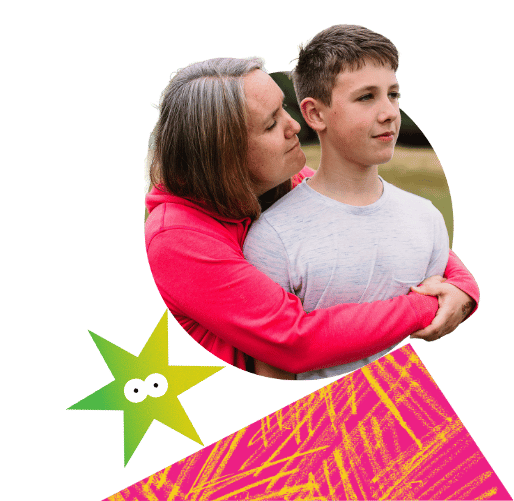Pathway for parents or carers of children from 6 months to 19+ years
Join our short, supplementary pathway designed to be completed alongside ‘Understanding your child’ or ‘Understanding your child with additional needs’. This pathway is for parents and carers who might be concerned about mental health or want to learn more about mental health and wellbeing.
Pathway stages
Bitesize stages for daily steps towards confident parenting and connected relationships.
Part 1 Before you do ‘Understanding your child’
1.1 Welcome
1.2 Mental health and wellbeing
1.3 Containment
1.4 Reciprocity
1.5 The Three Key Questions
1.6 Responding to threat
1.7 Responding to trauma
1.8 Your child’s response
1.9 Processing emotions
1.10 Feeling emotions
1.11 Previous experiences and genetics
1.12 What helps us to process emotions?
1.13 The next step
Part 2 After you’ve done ‘Understanding your child’
2.1 Welcome back!
2.2 Working together
2.3 Feeling understood
2.4 Making changes
2.5 Getting help
2.6 A recap
2.7 Anxiety
2.8 Thinking about your child
2.9 Depression
2.10 Common signs of depression
2.11 How to help
2.12 Self-harm
2.13 Other ways we react
2.14 And finally
2.15 Acknowledgments
About this pathway
Understanding your child’s mental health and wellbeing is a free, supplementary pathway designed for parents, grandparents and carers. This pathway complements Understanding your child and Understanding your child with additional needs and should be completed alongside either of these pathways.
Along the pathway, you will follow bitesize content exploring how strong, supportive relationships help shape a child’s emotional development and lifelong mental wellbeing. Whether you’re concerned about your child’s mental health or simply want to learn more, this pathway offers practical insights into building confidence, resilience, and empathy in your child.
Our clinical child psychologists, psychotherapists and health practitioners will introduce you to ideas and techniques including containment, reciprocity and behaviour. You’ll gain a better understanding of how children process emotions and how to support them through challenges like anxiety, depression or self-harm.
This pathway is broken into two parts, with part 1 designed to be completed before completing Understanding your child or Understanding your child with additional needs. You are then encouraged to return to part two once you have completed the full-length pathways to reflect on your learning and deepen your understanding.
91% learners said they found the pathway helpful
90% learners said they would recommend the pathway to friends and family
85% learners said the pathway made a difference for them
“This pathway helps you to take a step back and really think about how you can help your child process their feelings instead of you trying to solve the problem for them.”
Parent from the pathway
“This pathway is an eye opener… this is a tool that [will] help me to help my kids.”
Parent from the pathway
“This pathway has really help me on how understand my child’s challenges and what to do to bring him back on track. I’m very impressed.”
Parent from the pathway
“It has been particularly helpful to learn the many different ways anxiety can present itself in children.”
Learner from the pathway
“The pathway provides perspectives and illustrations of challenges that may not have been considered as we are subjective. The pathway provides vital ways to engage and techniques that encourages the child to open up at their pace. Thank you, for me [it’s] invaluable.”
Learner from the pathway



